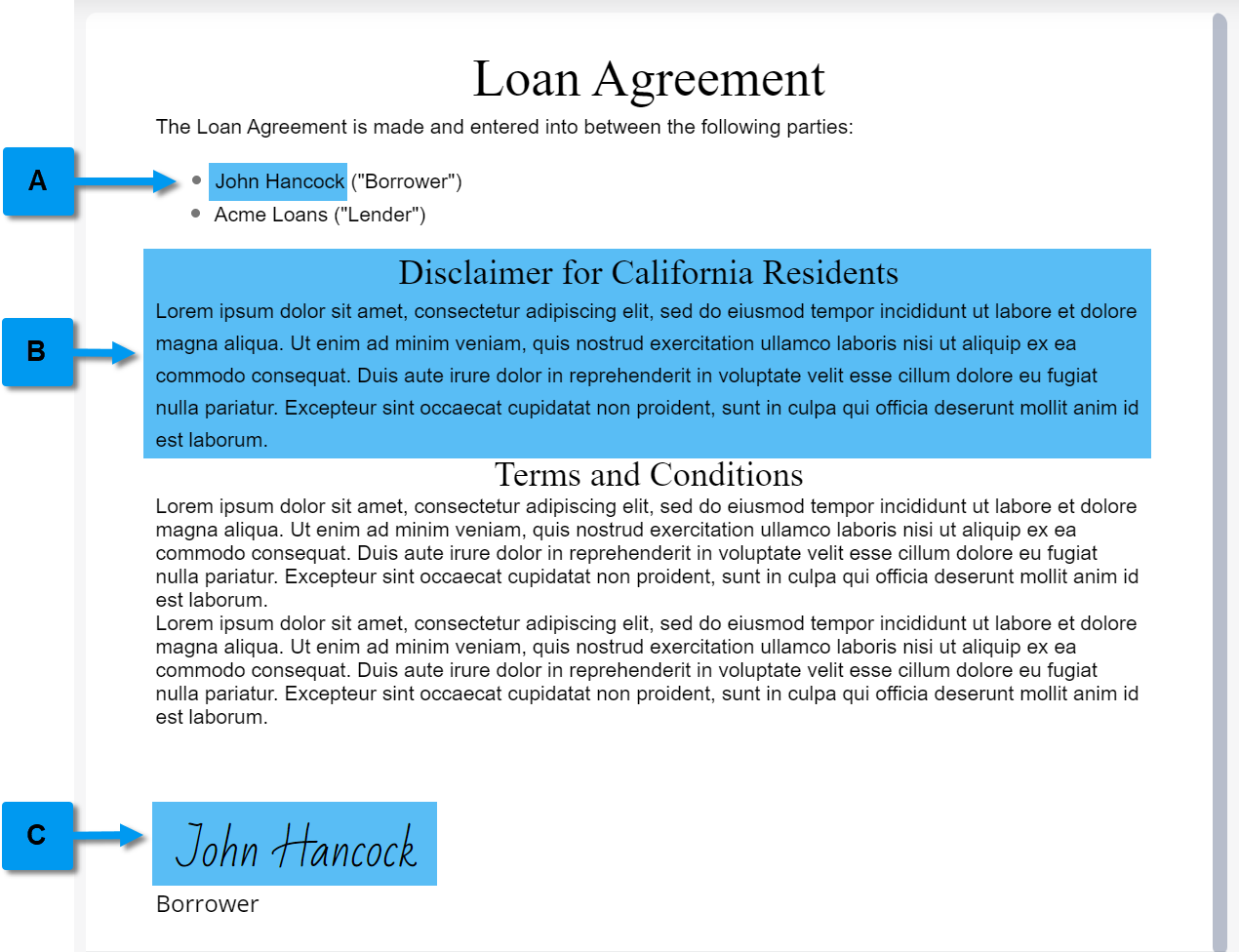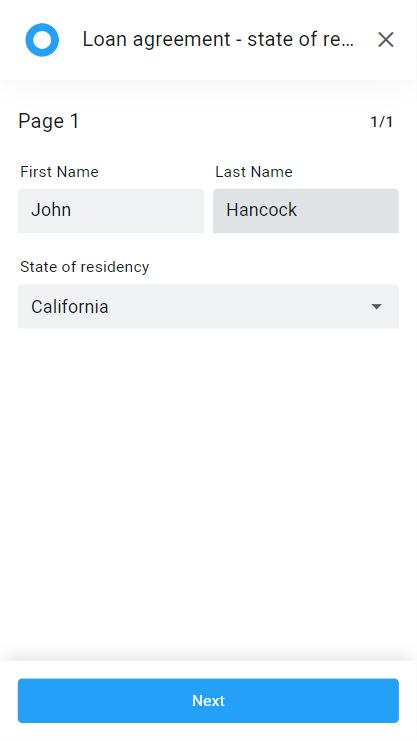Dynamic Documents are built exclusively within the Lightico UI, providing the capability to deliver fully customized documents tailored to each customer. The document is presented to your customer as dynamic HTML text and then rendered into a PDF document after signing or approval.
Some of the features offered by Dynamic Documents include:
Automatically insert customer information (such as name, address, and date of birth) directly into the document text.
Dynamically adjust content based on specific terms and conditions, such as customer age, location, and financial status. For instance, if a customer is located in California, where a disclaimer is required for a loan agreement, you can show or hide the disclaimer paragraph based on their stated location (B).
Obtain a customer signature which will be inserted into the completed document.

To get started building a Dynamic Document, see Create Dynamic Documents.
Using Forms
To gather the necessary information for customizing a Dynamic Document, you'll need to create a Lightico digital Form. Forms enable the collection of customer information while associating the data with Attributes, which can be thought of as tags or labels. When constructing the Dynamic Document, you'll use these same Attributes to define conditions for what text appears and for inserting the collected information into the document, as mentioned above.

Form as shown in the customer UI